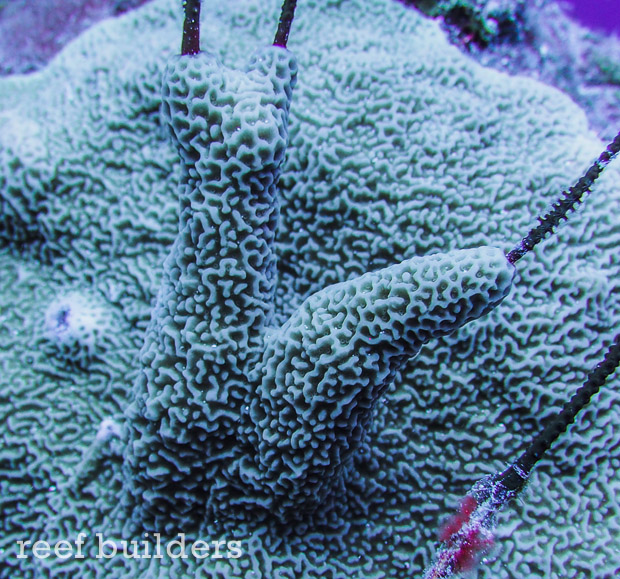There are over 70 species of Montipora described to date, with some of the widespread species being diverse enough to be divided into further sub-taxonomic units. The lion’s share of the “Montis” grown in the aquarium hobby are represented by only a couple dozen species, at most, with the majority of these being the thin branching, thin plating forms, or encrusting species.
Today we want to bring your attention to a species which does not neatly fit the mold of either plating, branching or encrusting; the submassive types which have unique growth forms of their own but which are not quite as conducive to propagation as the more common Montipora that are common in the aquarium. Montipora caliculata is a species of Monti that really stands out when you see them on the reef, but which really deserves to be seen in the aquarium world a little bit more.

The first time we laid eyes on Montipora caliculata pictured in the seminal Corals of the World, we were immediately struck by this species’ unique growth form. M. caliculata may not often be endowed with colors that will “burn your retinas” like some species, but its submassive growth form with a highly textured coenosteum is striking on its own.
Some colonies of Montipora caliculata will express the “sub” part of sub-massive to the extreme by developing thick upright pillars or really stout branches that might follow an ingrown worm or the axis of a gorgonian that the main colony has encroached. These thick upgrowth and pillars are the really striking part of Montipora caliculata especially taken together with the very unique surface texture of this species.
Montipora caliculata is not especially common in the wild, or in the hobby, as it prefers areas of clear oceanic waters where it can grow in high energy habitats similar to where one might find colonies of cat’s paw Acropora, A, palifera. However we have documented one standout colony or M. caliculata that was shared with us by Ultra Corals Australia of a colony with both colored ridges and polyps so the species is out there, collectors just need to be looking for it.




